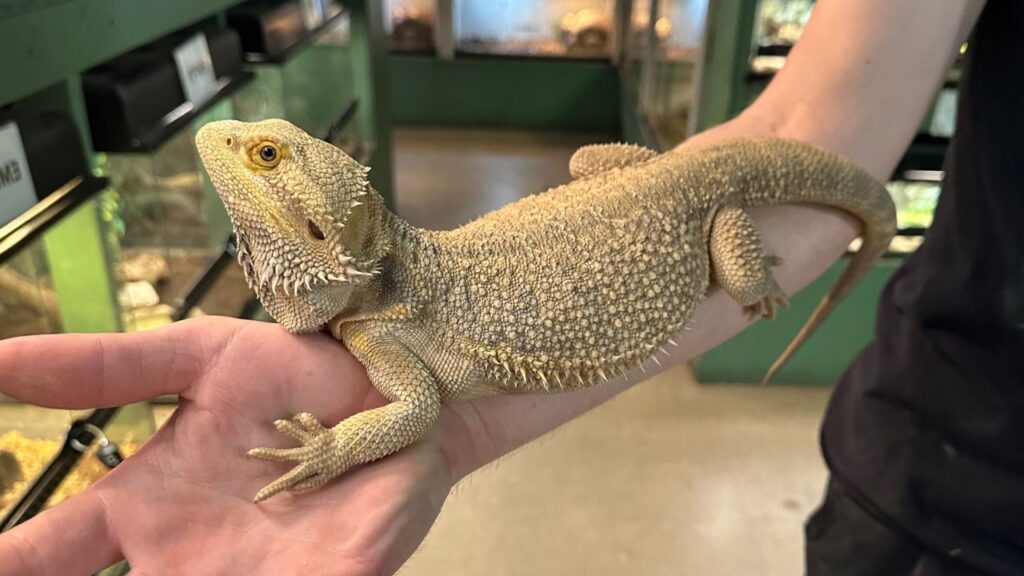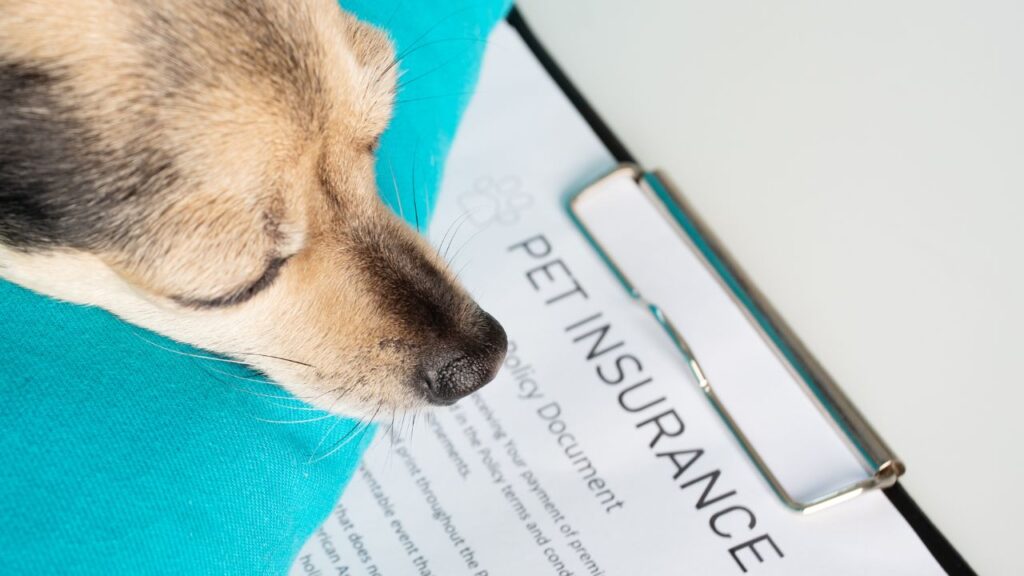Freptiles – For beginners, Leopard Geckos are a top choice due to their hardy nature and simple heat mat setup. Corn Snakes require a secure enclosure with a temperature gradient and are quite docile. Bearded Dragons need a varied diet and regular health checks, making them engaging pets.
Ball Pythons, known for their calm temperament, need secure housing and pre-killed rodents. Crested Geckos are low-maintenance with commercial food options. Blue-Tongue Skinks, with a mixed diet and moderate humidity needs, are also beginner-friendly. Finally, Russian Tortoises and Green Anoles offer unique care experiences.
Continue to discover which reptile suits your lifestyle.
Leopard Geckos
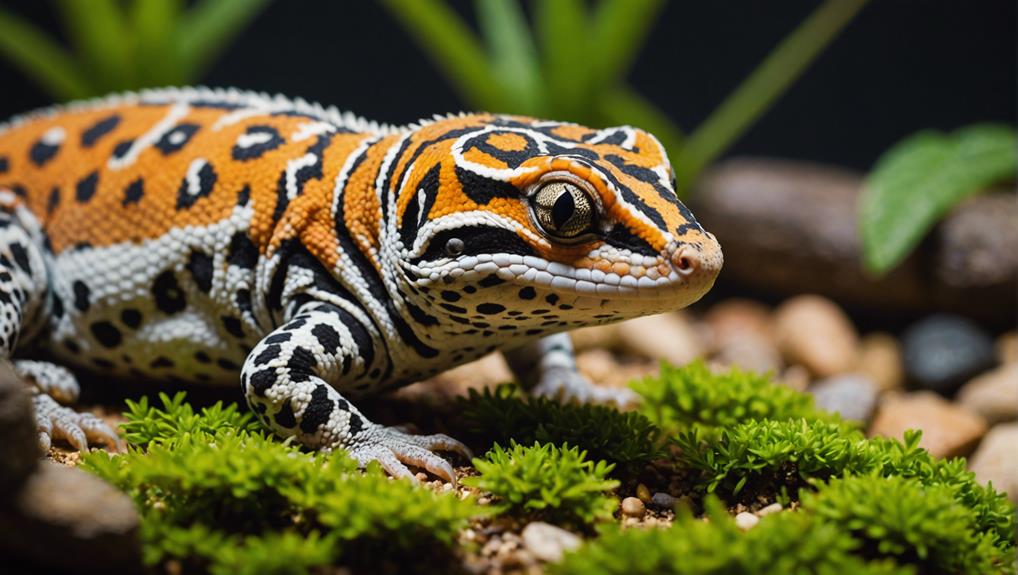
Leopard geckos are a fantastic choice for new reptile owners due to their easy care requirements and friendly nature.
You’ll find that these little lizards aren’t only low-maintenance but also quite charming. Their calm demeanor makes them easy to handle, and they often enjoy interacting with their owners. Leopard geckos don’t need a lot of space, so a standard 20-gallon tank is usually sufficient.
You won’t need to worry about complicated heating setups either. Leopard geckos thrive with a simple heat mat on one side of their tank to create a temperature gradient.
They’re insectivores, so feeding them is straightforward. Crickets and mealworms are their staples, and you can easily find these at most pet stores. Just be sure to dust their food with a calcium supplement to keep them healthy.
Cleaning their enclosure is a breeze. Spot clean daily and do a more thorough cleaning every couple of weeks.
Leopard geckos are hardy creatures, making them a great pet for those who value both freedom and simplicity. With their minimal care requirements, you’ll have more time to enjoy their delightful company.
Corn Snakes
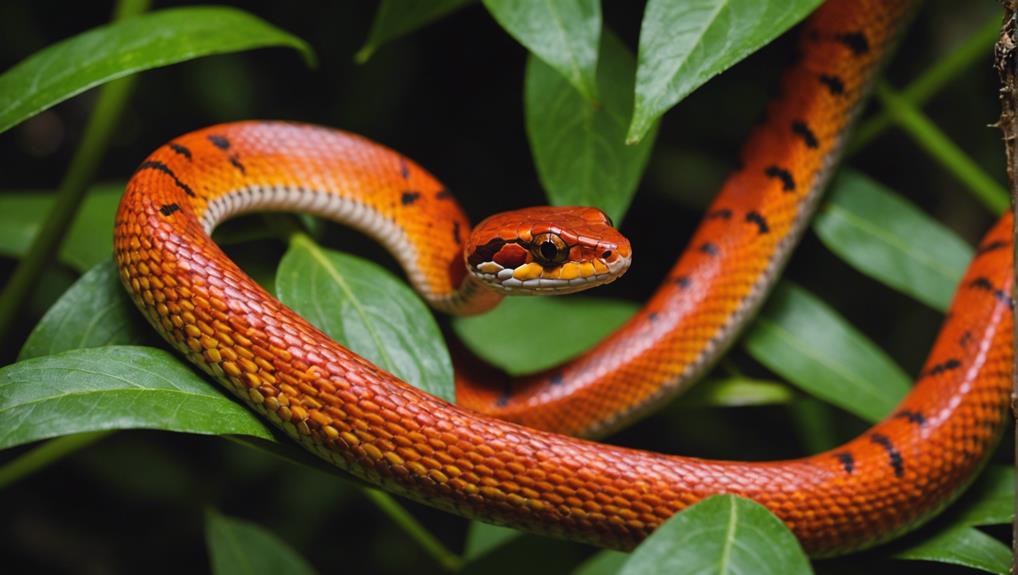
Corn snakes make excellent pets for new reptile owners, thanks to their manageable habitat needs and straightforward feeding requirements.
You’ll find that their calm temperament makes handling them relatively easy and stress-free.
Let’s explore the essentials of their enclosure setup, diet, and how to interact with them safely.
Habitat and Enclosure Needs
When setting up a habitat for your corn snake, prioritize a secure enclosure with plenty of space to explore. A glass terrarium with a tight-fitting lid works well, guaranteeing your snake can’t escape. Aim for an enclosure that’s at least 20 gallons for young corn snakes and upgrade to a 40-gallon tank as they grow. Ventilation is important, so choose a tank with a screened top.
Corn snakes are natural explorers and climbers, so provide plenty of hiding spots and branches for enrichment. Use a variety of substrates like aspen shavings, cypress mulch, or paper towels to allow your snake to burrow. Avoid cedar and pine, as they’re harmful to reptiles.
Maintain a temperature gradient in the enclosure, with one side warmer (around 85°F) and the other cooler (around 75°F). A heat lamp or under-tank heater can help achieve this. Verify that the enclosure includes a shallow water dish for drinking and soaking.
Regularly clean the habitat to prevent bacteria buildup. Spot clean any waste daily and perform a thorough cleaning monthly. With the right setup, your corn snake will have a safe, stimulating environment to thrive in.
Feeding and Diet Requirements
Feeding your corn snake a well-balanced diet is essential for its health and longevity. Corn snakes primarily eat rodents, with mice being the most common choice.
You should feed your snake pre-killed or frozen-thawed mice to prevent injuries that live prey might cause. As a hatchling, your corn snake will need to eat every 5-7 days, while adult snakes can be fed every 7-10 days.
It’s important to choose appropriately-sized prey. The general rule is that the mouse should be about the same width as the widest part of your snake’s body. Overfeeding can lead to obesity, while underfeeding can result in malnutrition.
Always keep a feeding schedule to track your snake’s diet and growth.
Provide fresh water daily in a shallow dish that’s large enough for the snake to soak in. This helps with hydration and shedding.
Make sure the water dish is secure to prevent spills that can raise humidity levels too high.
Handling and Temperament
After meeting your corn snake’s dietary needs, understanding its handling and temperament is the next step to a rewarding pet-owner relationship.
Corn snakes are known for their docile nature, making them an excellent choice for beginners. They rarely bite and are generally tolerant of being handled, which helps you build confidence as a new reptile owner.
When you first bring your corn snake home, give it some time to acclimate to its new environment before attempting to handle it. Start by gently picking it up from below, supporting its body, and allowing it to explore your hands. Consistent, calm handling will help your snake become more comfortable with you over time.
Corn snakes are curious and active, so handling sessions should be regular but not too long. Aim for short, frequent interactions rather than extended periods, to reduce stress. Always wash your hands before and after handling to avoid transferring any oils or scents that might irritate your snake.
Creating a positive handling experience will strengthen your bond with your corn snake, providing both of you with a sense of freedom and mutual trust. This approach guarantees a happy, healthy pet and a gratifying reptile-keeping journey.
Bearded Dragons
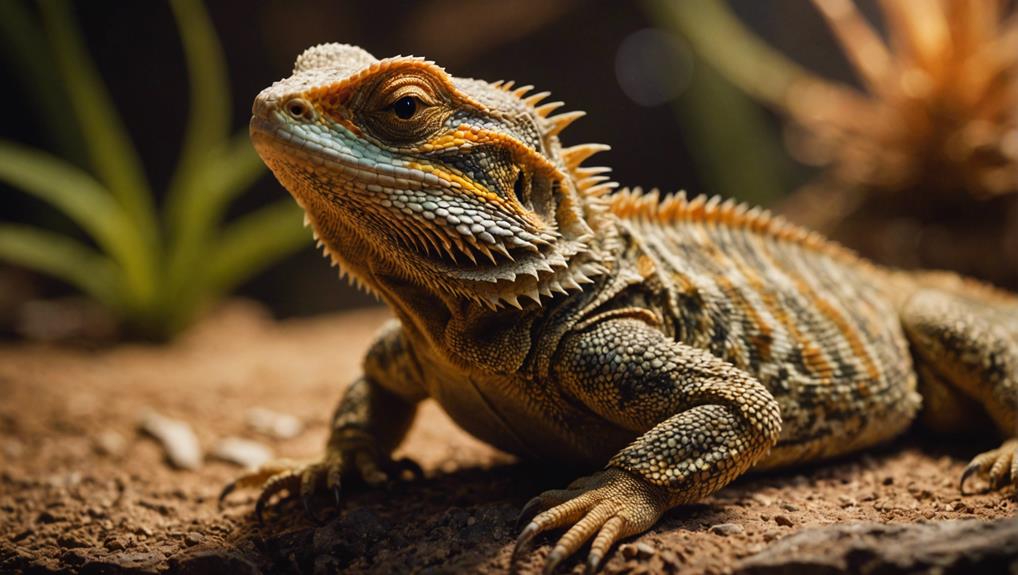
When considering a bearded dragon as a pet, you need to focus on their care and maintenance, diet and nutrition, and habitat requirements.
These fascinating reptiles are relatively easy to care for but do require specific conditions to thrive.
Let’s explore what you need to know to keep your bearded dragon healthy and happy.
Care and Maintenance
Caring for a bearded dragon involves providing a suitable habitat, a proper diet, and regular health checks.
Start by setting up a spacious terrarium with a secure lid. Bearded dragons need a temperature gradient, so include a basking spot at around 100-110°F and a cooler area at around 75-85°F. Use a heat lamp and UVB light to simulate natural sunlight, which is essential for their health.
Ensure the substrate you choose is safe and easy to clean; reptile carpet or paper towels work well. Avoid loose substrates like sand, which can cause impaction if ingested. Bearded dragons also require hiding spots and climbing structures to feel secure and stimulated.
Regular maintenance includes daily spot cleaning to remove waste and uneaten food. Thoroughly clean the terrarium and replace the substrate monthly. Monitor humidity levels, keeping them low to mimic their natural environment.
Health checks are essential. Look for signs of illness, such as lethargy, changes in appetite, or abnormal stool. Regular vet visits help catch potential issues early. With proper care and maintenance, your bearded dragon can thrive and provide companionship for years.
Diet and Nutrition
A balanced diet is essential for keeping your bearded dragon healthy and active. You’ll need to provide a mix of insects, vegetables, and occasional fruits to meet their nutritional needs.
Insects: Feed your bearded dragon a variety of insects like crickets, mealworms, and dubia roaches. These should be dusted with calcium powder to promote proper bone health. Juveniles need more protein, so offer insects daily. Adults can have insects 2-3 times a week.
Vegetables: Fresh vegetables should make up a significant portion of their diet. Offer leafy greens like collard greens, mustard greens, and dandelion greens. You can also include vegetables such as bell peppers, squash, and carrots. Chop them into bite-sized pieces for easy consumption.
Fruits: Fruits can be given as occasional treats. Suitable options include apples, berries, and melons. Be sure to cut them into small pieces and remove any seeds. Since fruits are high in sugar, limit them to a few times a week.
Habitat Requirements
Creating the right habitat for your bearded dragon is essential for their well-being and longevity.
Start with a tank that’s at least 40 gallons, though bigger is always better. Have a tank with a secure lid to prevent escapes. Use a substrate that’s safe and easy to clean, like reptile carpet or ceramic tiles. Avoid loose substrates like sand, which can cause impaction.
Temperature control is vital. You’ll need a basking spot that reaches 95-110°F during the day, with cooler areas around 75-85°F. At night, temperatures can drop to 65-75°F. Use a combination of heat lamps and ceramic heaters to achieve this. A thermostat helps maintain consistent temperatures.
Lighting is another key factor. Bearded dragons require UVB light to synthesize vitamin D3, which helps them absorb calcium. Make certain the UVB light covers the length of the tank and replace it every six months, even if it appears to be working. Provide a photoperiod of 10-12 hours of light daily.
Lastly, enrich their environment with hiding spots, climbing branches, and flat rocks for basking. Clean the habitat regularly to prevent bacterial buildup and keep your bearded dragon healthy and happy.
Ball Pythons
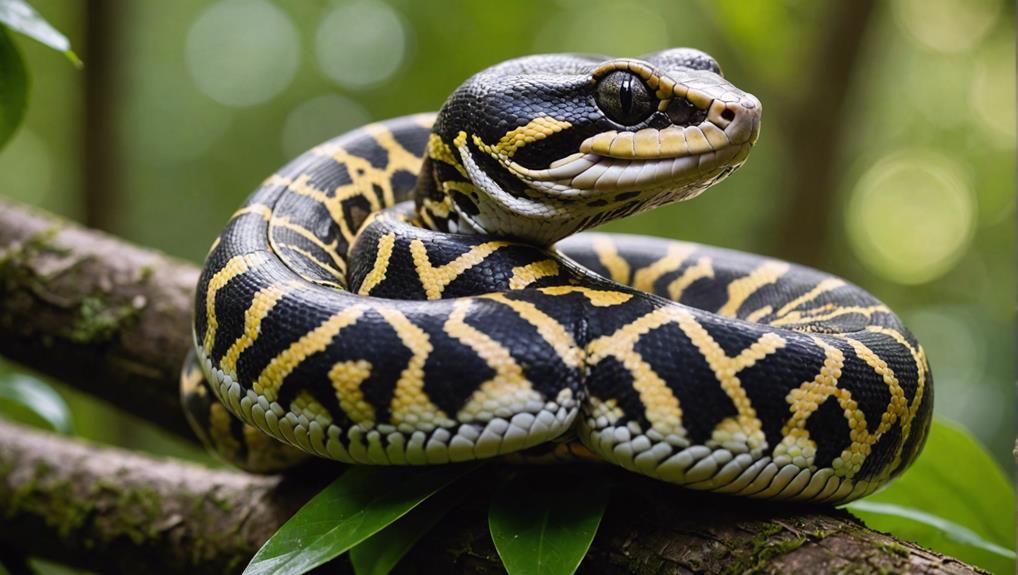
Ball pythons are an excellent choice for first-time reptile owners due to their manageable size and docile nature. These snakes typically grow to about 3-5 feet in length, making them easy to handle and house. Their gentle temperament means they rarely bite and are generally easy to tame, perfect for beginners looking for a low-stress pet experience.
Taking care of a ball python is straightforward. They’ve simple dietary needs and only require feeding once a week. They primarily eat rodents, which are readily available at pet stores.
- Habitat: Ball pythons need a secure enclosure that maintains proper humidity and temperature. A 40-gallon tank is usually sufficient for an adult.
- Feeding: Offer pre-killed or frozen-thawed rodents. This reduces the risk of injury to your snake.
- Health: Regularly monitor for signs of common health issues like respiratory infections or mites. A vet specializing in reptiles can provide necessary care when needed.
With their calm demeanor and easy-to-meet care requirements, ball pythons provide an enriching and manageable pet experience for those wanting to explore the world of reptiles.
Crested Geckos
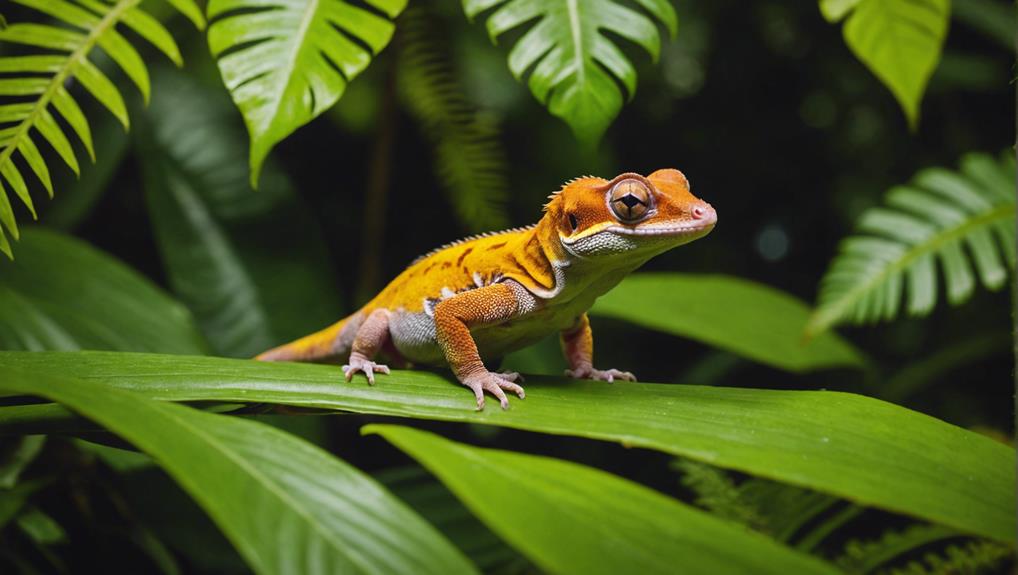
Crested geckos make fantastic pets for beginners due to their low-maintenance care requirements and engaging personalities.
You’ll find that these reptiles are easy to care for, needing only a moderate-sized enclosure with a few climbing branches and hiding spots. They thrive in room temperature settings, so there’s no need for complicated heating systems.
Feeding your crested gecko is straightforward. They enjoy a diet of commercial crested gecko food, which is readily available and nutritionally balanced.
Supplement their diet with occasional treats like fruit or small insects. Keep their water dish filled, and mist their enclosure regularly to maintain humidity levels.
These geckos are also nocturnal, meaning they’re most active at night. This makes them a great choice if you’re looking for a pet that fits into a busy daytime schedule.
Handling them is generally easy, as crested geckos are known for their calm demeanor. Just be gentle, as they can be a bit jumpy.
Blue-Tongue Skinks
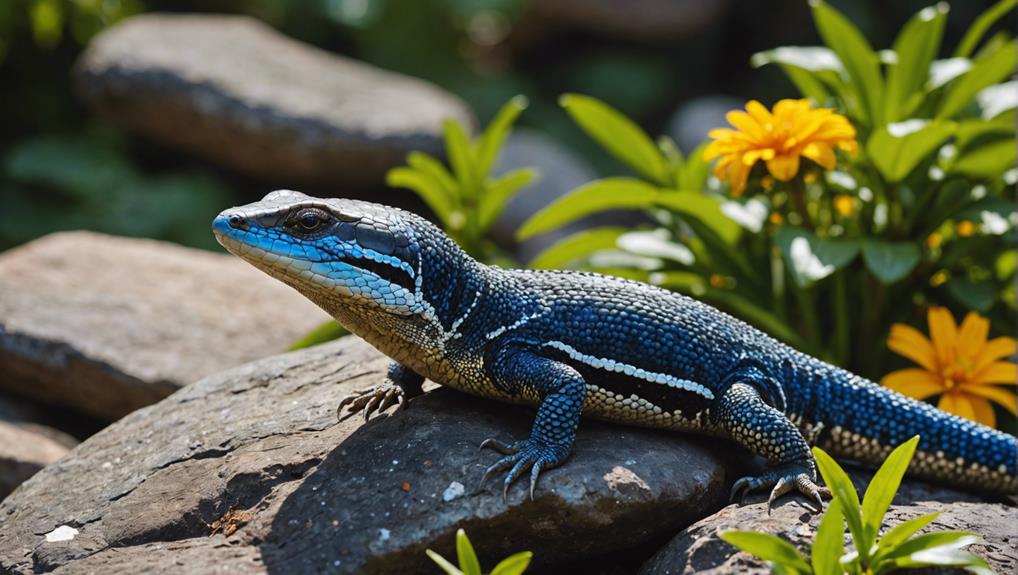
Blue-tongue skinks are excellent pets for beginners because of their docile nature and straightforward care requirements. These reptiles are relatively easy to handle and don’t require complex setups, making them perfect for someone just starting. Their calm demeanor means you can interact with them without much risk of bites or aggressive behavior.
To care for a blue-tongue skink, you’ll need to focus on three main aspects:
Housing: A spacious tank, ideally at least 40 gallons, provides ample room for them to move around. Include hiding spots and a substrate that holds humidity well.
Diet: Blue-tongue skinks are omnivores, so their diet should consist of a mix of vegetables, fruits, and protein sources like insects or lean meat. A balanced diet keeps them healthy and active.
Temperature and Humidity: Maintaining proper temperature gradients in the tank is essential. Aim for a basking spot of 95°F and a cooler side around 75°F. Humidity should be moderate, around 40-60%.
Russian Tortoises
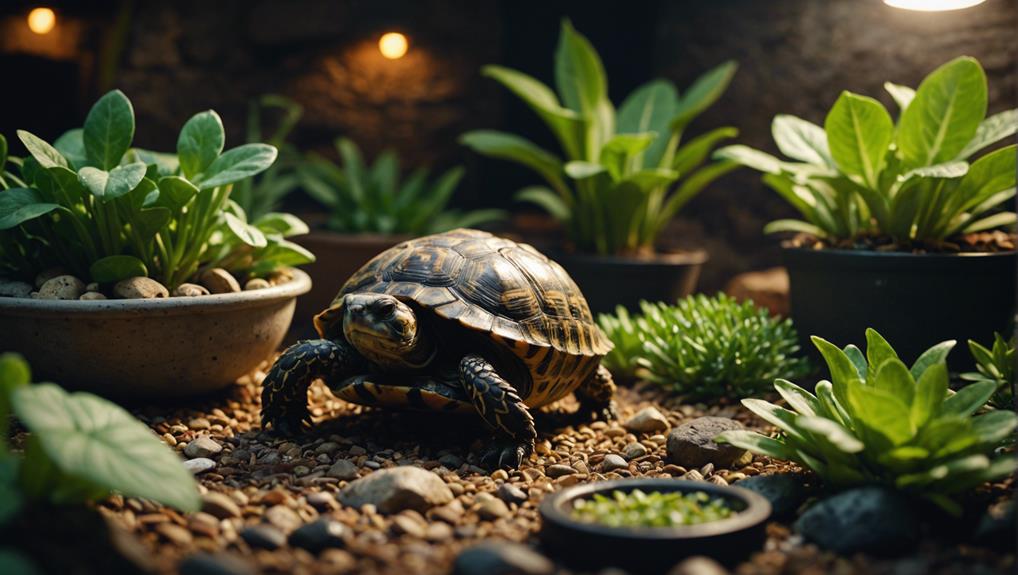
When you’re looking for a hardy and low-maintenance reptile, Russian tortoises make an excellent choice for new owners. These small, resilient creatures are perfect for those who value freedom and simplicity. They don’t require a lot of space, and their dietary needs are straightforward, making them easy to care for.
Russian tortoises thrive in an environment that mimics their natural habitat. A spacious enclosure with a substrate they can burrow into, like soil or coconut coir, is essential. They love to bask, so providing a basking spot with a heat lamp set to around 90-95°F is important. For the rest of the enclosure, aim for a cooler temperature range of 70-80°F. Access to UVB lighting is also vital for their health.
When it comes to feeding, Russian tortoises are herbivores. Their diet should primarily consist of leafy greens like dandelion greens, collard greens, and turnip greens. Avoid fruits and high-protein foods, as these can cause health issues. Fresh water should always be available in a shallow dish.
Russian tortoises are known for their friendly and curious nature, making them a delightful addition to your home. They’re a great starter reptile, offering a balance of ease and enjoyment.
Green Anoles
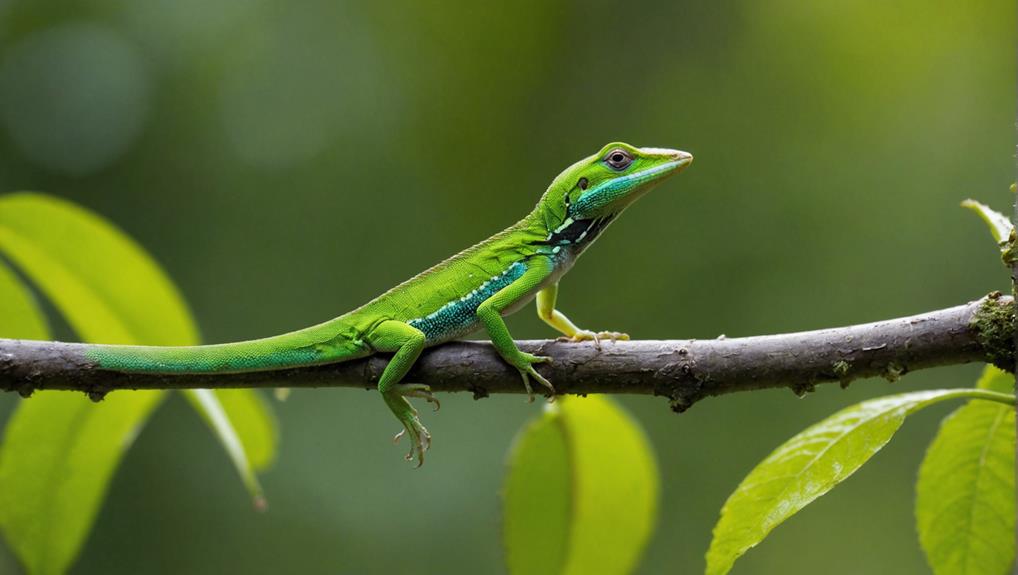
Green anoles are a popular choice for new reptile owners due to their vibrant color and relatively simple care requirements. These small, active lizards are perfect for those looking for an engaging and visually appealing pet without too much hassle. Green anoles thrive in a well-maintained habitat and are known for their ability to change color from green to brown.
To keep your green anole healthy and happy, you’ll need to focus on the following:
Habitat Setup
Provide a vertical tank with plenty of climbing branches and foliage. A 10-gallon tank is the minimum size for one anole, but bigger is better.
Temperature and Humidity
Maintain a basking spot at around 85-90°F and guarantee the tank’s overall temperature doesn’t drop below 70°F. Keep humidity levels between 60-70%.
Diet
Feed your anole a diet of live insects like crickets and mealworms. Dust the insects with calcium powder to prevent nutritional deficiencies.
Conclusion
Choosing the right reptile is like finding the perfect dance partner—it makes the experience enjoyable and stress-free.
Leopard Geckos, Corn Snakes, Bearded Dragons, Ball Pythons, Crested Geckos, Blue-Tongue Skinks, Russian Tortoises, and Green Anoles are all excellent choices for new reptile owners.
They’re relatively low-maintenance, easy to handle, and have straightforward care requirements.
By selecting one of these beginner-friendly reptiles, you’ll set yourself up for a rewarding and enjoyable reptile-keeping journey.
